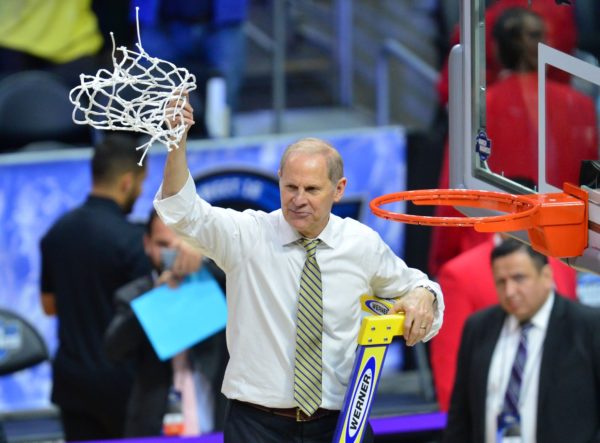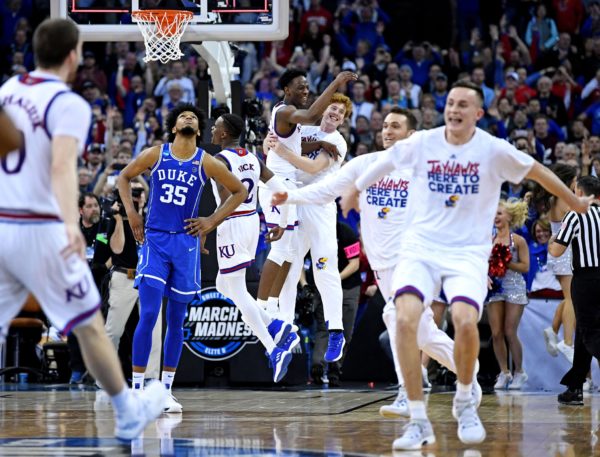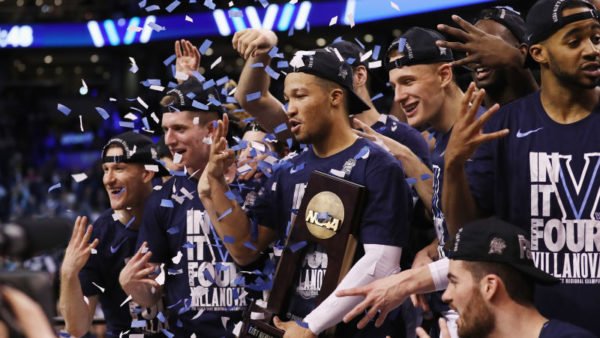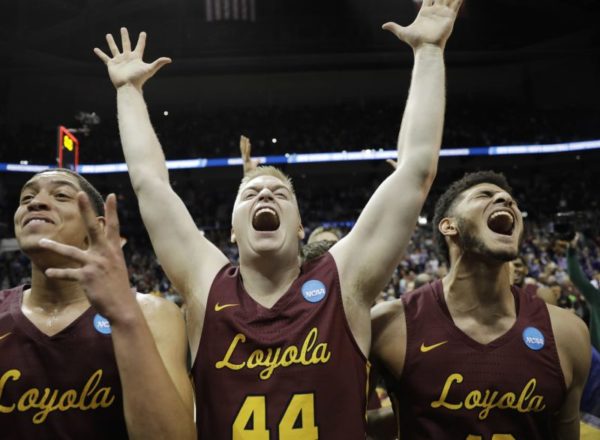Final Four Fact Sheet: Michigan Wolverines
Posted by Andrew Murawa on March 29th, 2018Now that the Final Four is set, our writers have put together a fact sheet on each of the four teams still remaining. Next, #3 Michigan, from the West Region.
How Michigan Got Here
West Region Champions. It’s been something of a mixed bag for the Wolverines in the NCAA Tournament to date. Their Sweet Sixteen win over Texas A&M was a sight to behold, a truly impressive performance that balanced explosive and beautiful offense with tight, frustrating defense. But wrapped around that performance have been three other wins highlighted mostly by their defense, with more misses than makes on the offensive end. But really, Michigan’s run to the Final Four began following an ugly 61-52 loss at Northwestern on February 6. Since that night, the Wolverines have reeled off 14 straight victories, including a romp through the Big Ten Tournament in Madison Square Garden. Their run through this tournament began with a tough win over Montana in which they held the Grizzlies to just two points in the first 10 minutes of the second half to break open a tight contest. In the Round of 32, their goose was more or less cooked, down 63-61 to Houston with just 3.6 seconds remaining — at which point they had a 3.4 percent chance of winning the game. But a buzzer-beating miracle by freshman Jordan Poole gave them the single extra point they needed to advance to the Sweet Sixteen. After doing a number to the Aggies in the regional semifinal, they withstood a gritty performance from Florida State last Saturday to advance to the program’s eighth Final Four in its history.
The Coach
John Beilein. John Beilein graduated from Wheeling College in 1975. Since then, he has never spent a basketball season as anything other than a head coach — he’s never been an assistant, nor has he taken a year away from the game. He worked his way through Newfane High School to Erie Community College to Division III Nazareth College to Divison II Le Moyne before finally getting a crack at a Division I job in 1992 with Canisius. He spent five years there, winning a regular season and tournament title to earn a crack at the Richmond job. In eastern Virginia, he again won a regular season and tournament title once each in five years, earning another upgrade to the job at West Virginia. He again spent five seasons there, making the NCAA Tournament twice including two runs to the Sweet Sixteen and an excruciating Elite Eight loss in overtime to Louisville in 2005. In 2007, Michigan hired Beilein to replace Tommy Amaker, and since then the well-traveled head coach has won two Big Ten regular season titles, consecutive Big Ten tournament titles, logged eight NCAA Tournament appearances in 11 years, advanced to four Sweet Sixteens and is now attending his second Final Four as a participant on the floor. By any measure, Beilein is considered one of the best coaches in all of college basketball.
Style
Beilein’s history at the Division I level has always been based around scoring. Since the beginning of the KenPom era in his final season at Richmond, his defensive efficiency has ranked higher than his offensive efficiency only five times. And his style has typically been associated with high utilization of the three-point shot. Only once in his 11 years at Michigan have the Wolverines attempted fewer than 40 percent of their field goals from three-point range, and this year is no exception. But, while this Michigan team attempts 43.1 percent of its shots from deep, they’re not quite as effective as some of Beilein’s other groups at just 36.1 percent. As always, however, Beilein is capable of adjusting. Over the past two seasons, Michigan has ranked among the top 10 teams nationally in taking away their opponents’ threes, holding them to fewer than 30 percent of their shots from distance. This year, under the assistance of defensive-minded assistant coach Luke Yaklich, the Wolverines have ramped up their defensive pressure, limiting opponents to a 47.6% eFG (35th in the nation) while also placing a priority on cleaning the defensive glass (24.7% offensive rebounding rate, 31st in the nation). While Michigan still runs many of the same offensive sets you’ve seen throughout Beilein’s career in Ann Arbor, it is an improved defense that sets this squad apart and gives it some necessary breathing room on nights that the shots aren’t falling.













































